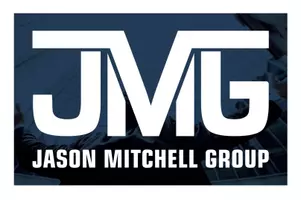San Diego County cancels naloxone contract. The DA’s now investigating.
San Diego County has canceled a multimillion-dollar contract to distribute naloxone, a nasal spray that can reverse opioid overdoses, at a critical time for addiction services.
The agreement with the Harm Reduction Coalition of San Diego ended June 30, according to public records available on the county’s website. Officials also terminated a second contract with the coalition for drug testing.
While the documents do not detail why the agreements ended, Tara Stamos-Buesig, the coalition’s founder and CEO, said someone involved in the distribution may have mismanaged funds. Stamos-Buesig said she flagged possible discrepancies to the county and is now working with officials to get to the root of any problems.
Stamos-Buesig acknowledged that there wasn’t always a paper trail for every spray container, but she said that was largely due to the speed with which outreach workers were handing out the naloxone.
“Nobody bought it from me, nobody’s selling it out there, nobody’s taking it on the black market,” she said Wednesday about the naloxone, which is commonly known by the brand name Narcan. “Lives are being saved, and I don’t know how you put a value on that.”
The San Diego County District Attorney’s Office has launched an inquiry into the situation. “I can confirm there is an investigation underway by our office regarding the Harm Reduction Coalition,” spokesperson Steve Walker wrote in an email. “However, I’m not able to provide any further information at this time.”
A county spokesperson declined to comment on whether money had been misspent. Instead, Tim McClain emphasized that the cancellation decision was made “without stating a specific breach of contract by the other party.”
“The County is working with partners to ensure the public has access to naloxone to prevent fatal opioid overdoses, and we are currently reviewing the recently terminated contracts,” McClain wrote in an email. “The County continues to support harm reduction efforts and naloxone is still widely available in the community through an array of County-funded programs and other community providers, much more so than it was in the recent past.”
McClain directed residents to an online map showing where naloxone can be picked up.
One immediate effect of the cancellations is that naloxone vending machines are being pulled from the public lobbies of local jails.
A spokesperson for the San Diego County Sheriff’s Office said those machines, which were tied to the distribution contract, are to be removed from four locations: the East Mesa Reentry Facility, George Bailey Detention Facility, Las Colinas Detention and Reentry Facility and Vista Detention Facility. All four will eventually be replaced, officials added.
“In the interim, members of the public may request Naloxone at the public information window at each of those four jail facilities,” the spokesperson wrote in an email. Incarcerated individuals should continue to have access, and the county is “also working on options to provide Naloxone vending machines at all other county detention facilities in the near future.”
Harm reduction
Overdose deaths are finally dropping in San Diego County after years of increases. The improvement has been especially pronounced among the region’s homeless population, which recently saw a decrease in drug-related fatalities.
While the numbers are likely influenced by several factors — including a growing awareness that fentanyl, a synthetic opioid far more powerful than heroin, is sometimes secretly laced into other drugs — experts have repeatedly credited naloxone with reviving countless residents. Free Narcan is now available at distribution sites all over the county, an effort the harm reduction coalition has been at the center of.
Yet some leaders have long been critical of harm reduction in general. In late July, President Donald Trump issued an executive order telling officials to “not fund programs that fail to achieve adequate outcomes, including so-called ‘harm reduction’ or ‘safe consumption’ efforts that only facilitate illegal drug use and its attendant harm.” (Safe consumption sites are places where people are allowed to use illegal drugs, although those projects are rare and not part of the county’s work.)
The harm reduction approach focuses on keeping anyone using drugs as healthy as possible until they’re ready to accept treatment — or in places like San Diego County, which has a shortage of detox beds, the goal is sometimes just keeping someone alive until a spot opens up. Proponents, including many with a history of addiction, point to multiple studies that show allowing drugs to be used more safely can reduce accompanying problems, like the spread of disease, while simultaneously building trust with those struggling to get clean.
The naloxone distribution contract was signed in 2022 and originally worth about $5.1 million. (It’s since been amended.) The drug testing services contract, signed last year, maxed out at around $6.3 million. Stamos-Buesig said those were the coalition’s only county contracts. She added that the group had other sources of funding and would continue to look for ways to offer life-saving services.
For the record: This story has been updated with information about local jails and the district attorney.
Categories
Recent Posts










GET MORE INFORMATION


